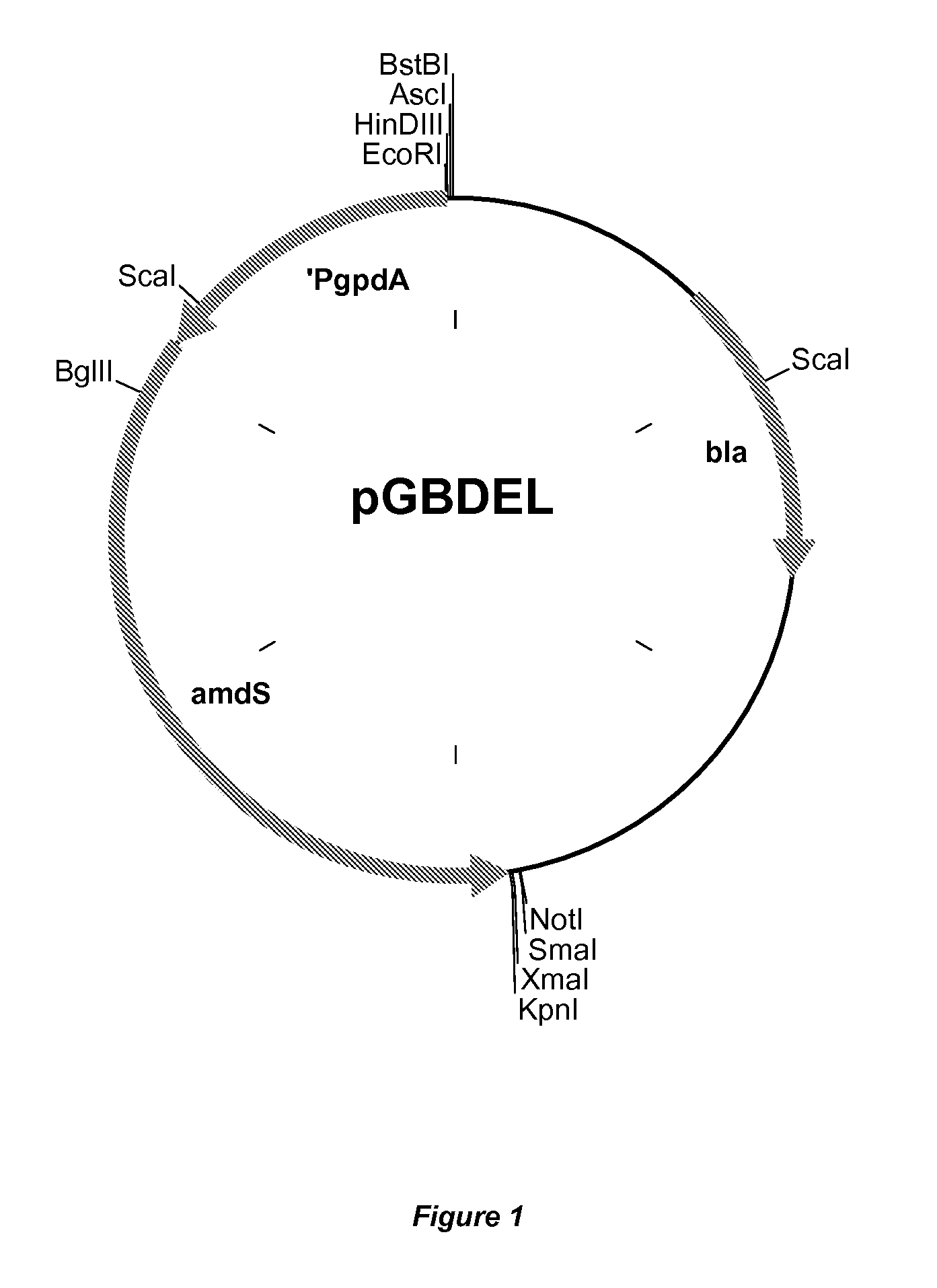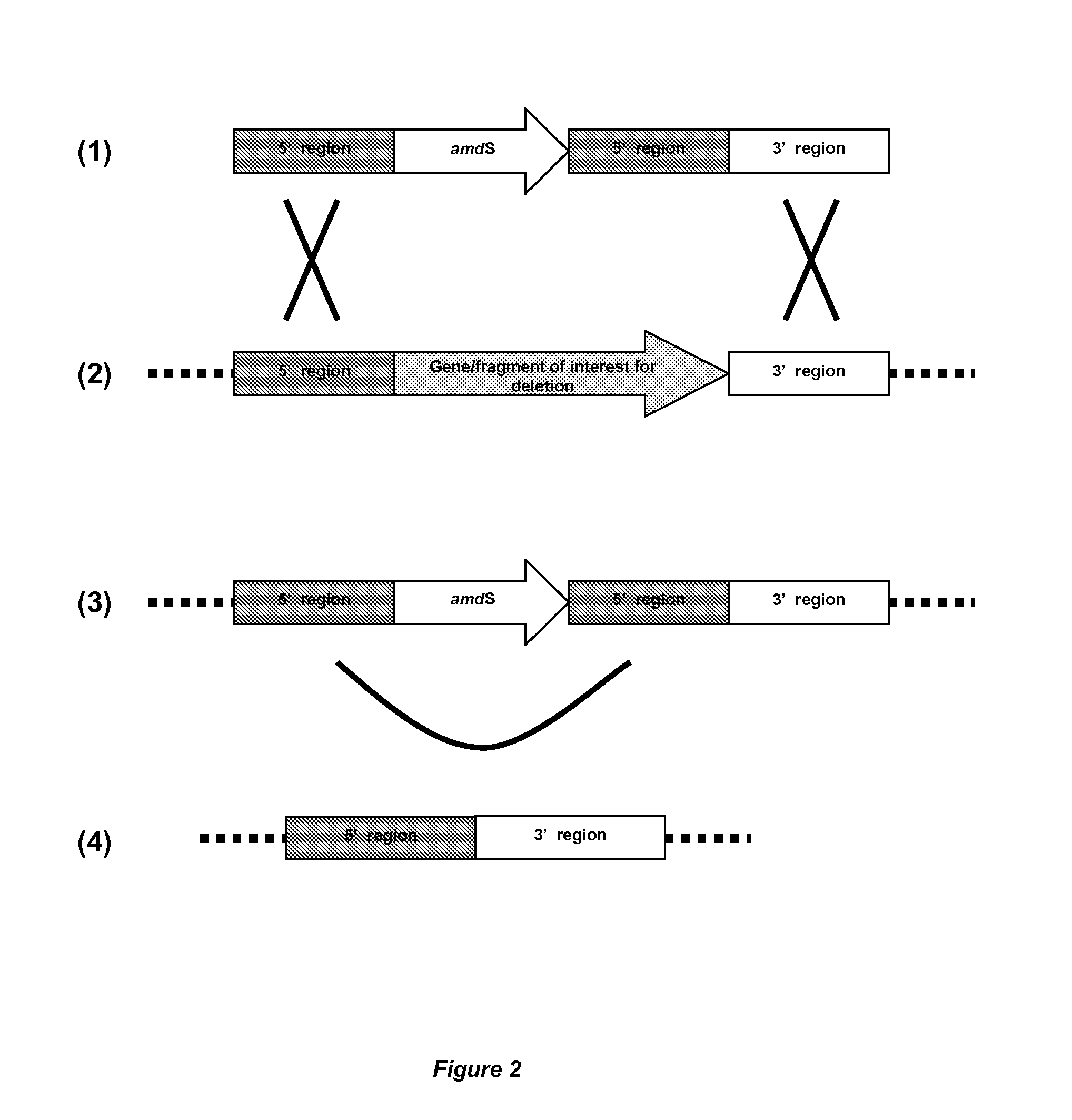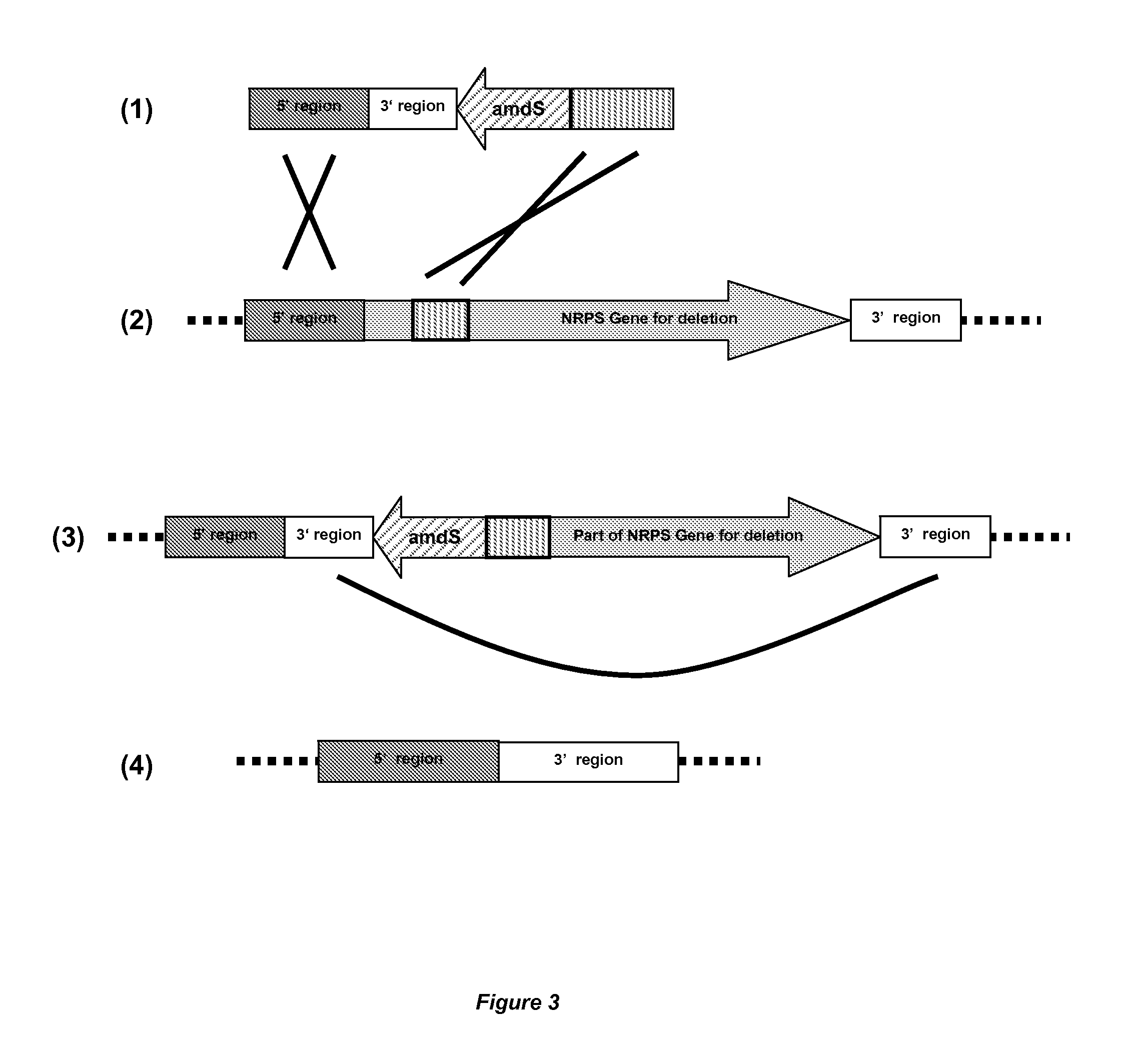Method for the production of a compound of interest
- Summary
- Abstract
- Description
- Claims
- Application Information
AI Technical Summary
Benefits of technology
Problems solved by technology
Method used
Image
Examples
example 1
Construction of Enzyme Producing Aspergillus niger Strains
[0254]The Penicillium chrysogenum glucose oxidase enzyme (with a codon pair optimized coding sequence as depicted in SEQ ID NO: 29, and a protein sequence as depicted in SEQ ID NO: 30), a lipolytic L01enzyme as detailed in WO2009 / 106575, porcine phospholipase A2 (PLA2) protein were selected as model proteins for enzyme expression in the A. niger WT 4.
[0255]The P. chrysogenum gox gene and the gene encoding the lipolytic enzyme were cloned into an A. niger pGBTOP— expression vector using the techniques as described in WO 98 / 46772 and WO 99 / 32617, under the control of the glucoamylase promoter, yielding pGBTOPGOX-1 and pGBTOPLIP-1. The fragment for overexpression of PLA2 is made as a fusion of propLA2 with a native glucoamylase A gene of A. niger and is prepared as described by Roberts et al. (Roberts I. N., Jeenes D. J., MacKenzie D. A., Wilkinson A. P., Sumner I. G. and Archer D. B. (1992)—Heterologous gene expression in Asper...
example 2
Construction Approach of Aspergillus niger GBA Strains, Containing Deletions
[0257]All gene replacement vectors described and used below, were designed according to known principles and constructed according to routine cloning procedures. The use of general cloning vector pGBDEL (FIG. 1) for constructing deletion vectors and the counterselection procedure were a.o. described in WO06 / 040312, EP635574B and WO 98 / 46772. In essence, deletion vectors comprise approximately 1-2 kb targeting regions for the respective ORF sequence, to target for homologous recombination at the predestined genomic locus. In addition, they contain the A. nidulans bi-directional amdS selection marker gene for transformation, in-between direct repeats. The removal of the amdS gene can be done by so-called counter selection, plating on fluoro-acetamide media, resulting in the selection of marker-gene-free strains. Using this strategy of transformation and subsequent counterselection, which is also described as t...
example 3
Construction of an Aspergillus niger Strain of the Invention with a Gene Encoding an NRPS Enzyme Disrupted
[0259]To be able to disrupt the gene (npsE) encoding a non-ribosomal peptide synthase (with a genomic sequence as depicted in SEQ ID NO: 35, the coding sequence depicted in SEQ ID NO: 36, the mRNA depicted in SEQ ID NO: 37 and the nrps protein depicted in SEQ ID NO: 38), a gene replacement vector was designed as described above in example 2. Vector pGBDEL-NRPS was constructed by DNA synthesis and comprised approximately 1.3 kb targeting regions of the npsE promoter, part of the npsE ORF and 3′ region of npsE for homologous recombination, with a layout and orientation of fragments as shown in FIG. 4. This pGBDEL-NRPS vector was linearized and used to transform Aspergillus niger strains WT 4, PGOX-1, LIP-1 and PLA-1. After selection of a correct transformant with an integration of the fragment at the npsE locus, and subsequently counterselection, strains WT 4_NPS_E, PGOX-1_NPS_E, ...
PUM
| Property | Measurement | Unit |
|---|---|---|
| Fraction | aaaaa | aaaaa |
| Fraction | aaaaa | aaaaa |
| Fraction | aaaaa | aaaaa |
Abstract
Description
Claims
Application Information
 Login to View More
Login to View More - R&D
- Intellectual Property
- Life Sciences
- Materials
- Tech Scout
- Unparalleled Data Quality
- Higher Quality Content
- 60% Fewer Hallucinations
Browse by: Latest US Patents, China's latest patents, Technical Efficacy Thesaurus, Application Domain, Technology Topic, Popular Technical Reports.
© 2025 PatSnap. All rights reserved.Legal|Privacy policy|Modern Slavery Act Transparency Statement|Sitemap|About US| Contact US: help@patsnap.com



